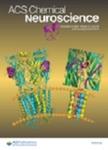版权所有:内蒙古大学图书馆 技术提供:维普资讯• 智图
内蒙古自治区呼和浩特市赛罕区大学西街235号 邮编: 010021

作者机构:Qingdao Univ Dept Anesthesiol Affiliated Hosp Qingdao 266000 Peoples R China Qingdao Univ Dept Med Qingdao 266000 Peoples R China
出 版 物:《ACS CHEMICAL NEUROSCIENCE》 (ACS化学神经科学)
年 卷 期:2023年第14卷第6期
页 面:1017-1032页
核心收录:
学科分类:0710[理学-生物学] 1007[医学-药学(可授医学、理学学位)] 071010[理学-生物化学与分子生物学] 081704[工学-应用化学] 1001[医学-基础医学(可授医学、理学学位)] 07[理学] 08[工学] 0817[工学-化学工程与技术]
基 金:People?s Livelihood Science and Technology Project of Qingdao [18-6-1-85 nsh]
主 题:Propofol neurotoxicity autophagy mitochondria neurotrophin noncoding RNA
摘 要:Propofol is the most commonly used intravenous general anesthetic in clinical anesthesia, and it is also widely used in general anesthesia for pregnant women and infants. Some clinical and preclinical studies have found that propofol causes damage to the immature nervous system, which may lead to neurodevelopmental disorders and cognitive dysfunction in infants and children. However, its potential molecular mechanism has not been fully elucidated. Recent in vivo and in vitro studies have found that some exogenous drugs and interventions can effectively alleviate propofol-induced neurotoxicity. In this review, we focus on the relevant preclinical studies and summarize the latest findings on the potential mechanisms and therapeutic strategies of propofolinduced developmental neurotoxicity.